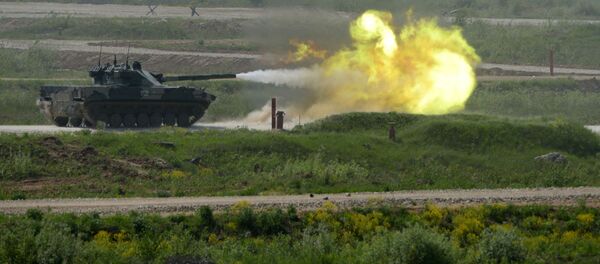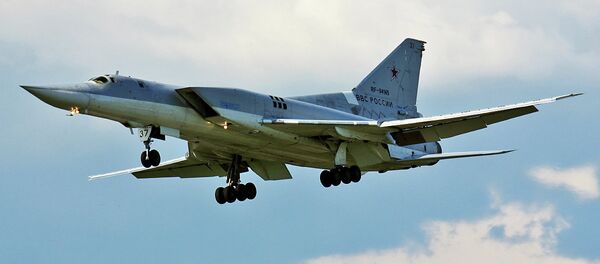After a Kh-32 rocket is launched from the aircraft it reaches an altitude of up to 40 km, entering the stratosphere, and then rushes down at the target.
Currently, tests of the new missile are in the final stage, a defense industry source told the Russian newspaper Izvestia.
Tactical Missiles Corporation also confirmed that the company is now working on the Kh-32 missile.
First of all, the newest missile will be aimed at destroying enemy warships, radar stations and targets that seriously distort radar signals for bombers, including bridges, military bases and power stations, military expert Dmitry Kornev said.
"After launch, a Kh-32 missile reaches an altitude of 40 km, and then it flies horizontally, approaches the target and attacks it from above," he explained.
Since the Kh-32 has an inertial navigation system and a target seeker with a radio-radar station, it has an outstanding accuracy and does not rely on GPS/GLONASS data, Kornev explained.
The missile is expected to have a firing range of up to 1,000 km and reach speeds of no less than 5,000 kmh. The combination of speed and trajectory makes the Kh-32 almost invincible to enemy air defenses and interceptors.
"There were over 10 Tu-22M regiments with the Soviet Navy. Each regiment comprised 20 Tu-22M bombers that could carry 40-60 Kh-22 missiles. They were aimed at striking US aircraft carrier groups," military historian Dmitry Boltenkov said.
The development of the Kh-32 started in the early-1990s, and the first launches were supposedly conducted in the mid-2000s. In 2013, pictures appeared showing Tu-22M3 bombers conducting test flights with Kh-32 missiles at an airfield outside Moscow.




